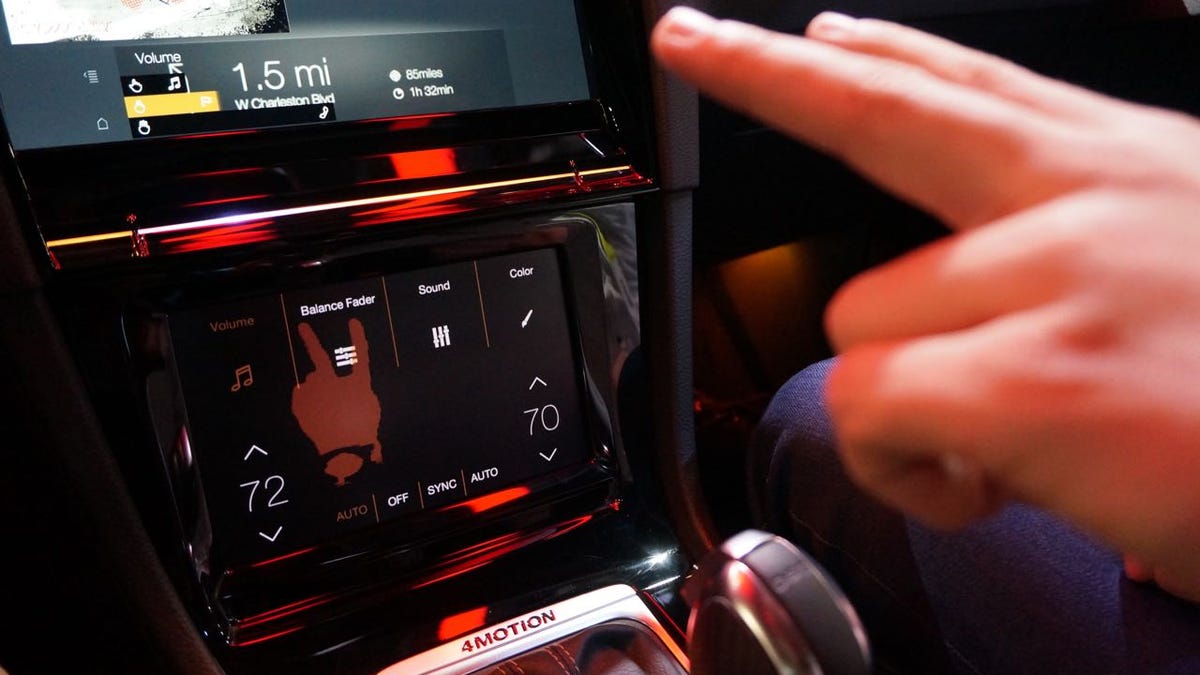Hands off with the Volkswagen Golf R Touch at CES 2015
Volkswagen's concept hot hatchback combines haptic feedback touchscreens with touchless gesture controls.

LAS VEGAS -- Earlier this week, Volkswagen announced its gesture-controlled Golf R Touch concept and new autonomous parking technology. I caught up with the automaker to get a closer look at these "hands-off" systems. My first stop was behind the wheel of the Golf R Touch concept try out its touch-less gesture-controlled interface.
Volkswagen's goal with this car was to totally eliminate the physical switches, replacing all of the infotainment, climate and environment controls with proximity-aware capacitive systems and gesture controls. For example, placing my hand near the sunroof and swiping in the air caused the glass panel to open. I could use similar swipes to lower and raise the windows or activate the headlamps. The sensors are proximity-aware, only illuminating and activating their icons as my hand approached, adding context to my actions and reducing the amount of unnecessary ambient light in the car at night.
The Golf R Touch uses a fully digital 12.3-inch instrument cluster, but the main attractions of the dashboard interface is the pair of screens that make up the center infotainment stack. The top screen is a massive 12.8-inch high resolution capacitive touch screen. The driver can use gesture controls to navigate and activate areas of the dashboard interface by holding their open hand, palm down over the shift knob.
However, I found it easier to get around by actually touching the screen. Volkswagen Head of Development Electronics Architecture and Networks, Dr. Andreas Titze tells me that the automaker doesn't intend for gesture control to replace the tried and true touch screen, and that the R Touch is just an experiment in augmentation.
The infotainment screen is highly customizable, giving the driver the choice of color scheme, background imagery - including a sort of navigation live wallpaper - and control over what information is displayed. Crisp 3D graphics pair well with futuristic typography; VW's designers have done an excellent job of organizing the plethora of information without resorting to boring lists of options.
Even when using the touch screen, gestures play a role. For example, swiping a capacitive bar with one finger changes the volume. Swiping with two changes the color scheme and using three fingers adjusts a different option. The system looks fantastic, but some may find it a bit too busy for the road. With a simple pitching gesture, the interface can be minimized to reduce distraction.
Just below the main screen is smaller 8-inch capacitive touchscreen. This screen has a matte finish, rather than glossy, and is home to the climate and contextual controls. Interestingly, Volkswagen wanted to retain the feel of physical controls when using the touchscreen, so it has built-in haptic feedback. Sliding a finger across the screen triggers a tiny vibration between the virtual buttons, mimicking the gaps you'd feel between physical ones. More impressively, pressing a virtual buttons causes the screen vibrate momentarily and give ever so slightly, simulating the pressing of a physical button. The result is amazing. VW uses a similar haptic feedback on the steering wheel controls, which look like discrete buttons, but are actually one large capacitive touch pad, designed to limit the number of parts needed.
Another place that Volkswagen has used haptic feedback is in the seats. The automaker has hidden vibrating actuators in the sport buckets that integrate with the audio system, thumping and buzzing with the music to give the tactile illusion of a massive subwoofer, without filling the trunk with speakers.

